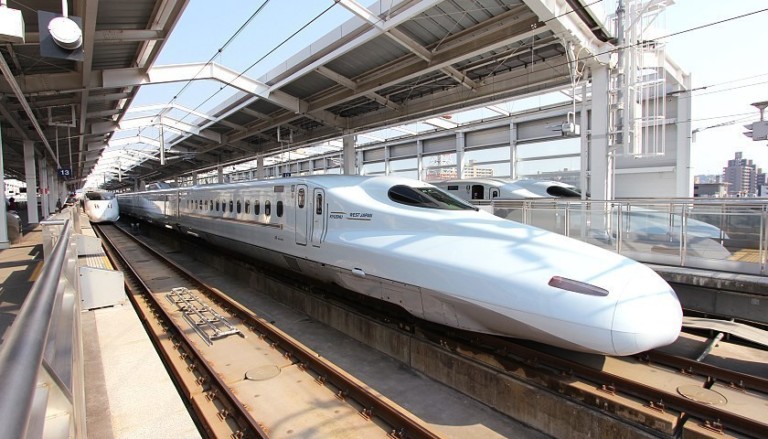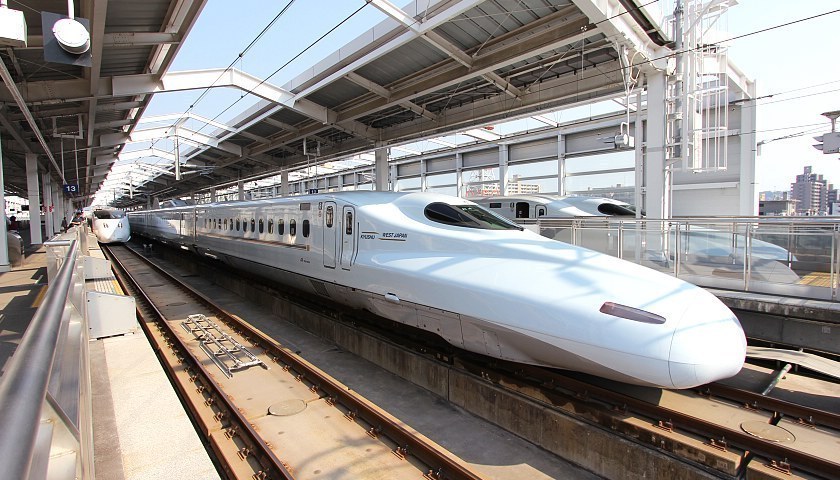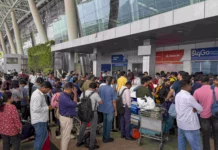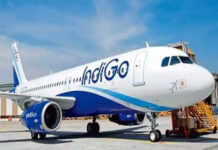 ON BOARD A SHINKANSEN: For an Indian waiting for a Shinkansen to arrive on a railway platform in Japan was like waiting for a mythical creature — something that I had heard so much about, but did not believe could be true.
ON BOARD A SHINKANSEN: For an Indian waiting for a Shinkansen to arrive on a railway platform in Japan was like waiting for a mythical creature — something that I had heard so much about, but did not believe could be true.
It arrived, no, rushed in like a monster – long nosed, belly up, sturdy, roaring, as if terribly hungry – but came to a halt, almost in stealth.
Everyone had their cameras poised, but few managed to get good photos or videos of the world famous high-speed bullet train, known in Japan as Shinkansen.
Passengers, unlike in India, stood silently in queue, almost as if paying their respects to the gentle giant who has brought Japan’s farthest corners within the reach of its capital city and despite its speed, has not caused a single fatality in 54 years of its operation.
Once aboard the Sakura Shinkansen, which means cherry blossoms in Japanese, for a 92 kilometer journey at a speed of more than 260 km/hr between Hakata and Kumamoto to see the maintenance depot of the Kyushu Railway Company, one can see why these trains have gained such media attention worldwide.
The entire journey took only 40 minutes to complete.
The Gatimaan Express, which runs between Delhi and Jhansi in Uttar Pradesh at a speed of 160 km/hr, is the fastest train in India.
However, as you ride the Shinkansen, be prepared for a clinical experience – it is far from the romantic nostalgia associated with such train journeys back home.
There is also no time to forge bonds with co-passengers as the journey lasts a mere 40 minutes.
The concrete walls on both sides of the tracks and the high speed make sure that looking out of the windows are a waste of time.
However, despite the high speed, there was no jerk, no luggage flying around. I held on to my seat in the beginning, just in case – but did not feel a thing.
The ride was smooth and other than a hum of the train cutting through the air, there was almost no sound.
The concept of trains running late is unheard of in the Shinkansen network, where average delays are less than a minute and for which apologies are swift.
Comprising eight coaches, the train is clean – not a scrap of paper, no plastic bottles or remnants of long journeys in sight.
This is despite the fact that one can eat whatever one wants on board. In fact, there is a cart that comes around with food and beverage for sale. The best is the ‘bento’ boxed meals comprising assortment of sandwiches and salads for people on the go but often served with chopsticks only!
As far as comfort goes, the high-backed cushioned seats, wooden folding tables, multiple charging points and even two smoking compartments, meant, that for me, who has to wait till 2022 for the Indian version of the Shinkasen, the ride was over too soon!
In some versions of the Shinkansen, the interiors have been done up in wood and bamboo, and the seat covers in pure Japanese-style designs.
A single Shinkansen ride, which costs about 5,000 Yen (Rs 3,196 approx) and a ‘bento box’ (optional) costing anywhere between 1,000 yen and 2,000 yen (Rs 640-Rs 1278), could well be a one-time experience for tourists, but for many in Japan, it is a lifeline – for a better life, for a better future coming to them at a speed that can go up to 300 km/hour.
The Indian bullet train is touted to be cheaper, much affordable than the Japanese version. A single ride in the 508 km stretch between Mumbai and Ahmedabad could cost Rs 3,000 and as low as Rs 250 between Banda-Kurla Complex (BKC) and Thane.
During my stay here, I took multiple rides on the Japanese Shinkansen, but true to their clinical precision, the experience was exactly the same each time. PTI







